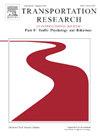驾驶行为对车内人热感觉及脑电图的影响
IF 3.5
2区 工程技术
Q1 PSYCHOLOGY, APPLIED
Transportation Research Part F-Traffic Psychology and Behaviour
Pub Date : 2025-02-27
DOI:10.1016/j.trf.2025.02.027
引用次数: 0
摘要
智能座舱热感知交互系统影响着智能网联自动驾驶汽车的舒适性、安全性、接受度和续航里程。然而,现有的车辆热舒适评价方法并没有研究驾驶行为对驾驶员和乘客热感知的影响以及与热感知相关的生理信号的差异。本研究探讨了室外驾驶条件下基于脑电信号评估驾驶员和乘客热感知的可行性,并分析了驾驶行为对人体热感知和脑电的影响。结果表明,不同热感觉状态下乘客的脑电差异大于驾驶员,高频β和γ相对功率可用于区分人体热舒适。额叶、顶枕叶和左颞叶区域的脑电通道对热感敏感。不同热感知状态下驾驶员和乘客的生理特征及其变化规律存在显著差异,而主观热感知差异不显著,因此应分别考虑驾驶员和乘客的热舒适评价标准。未来的研究将探讨冬季汽车乘员舱升温时驾驶行为对人的热感知和脑电的影响,进而预测全年车内人的热感知。本研究为基于脑电图的车辆人体热感知评价提供了理论基础,增强了人车热感知的交互性。本文章由计算机程序翻译,如有差异,请以英文原文为准。
Effects of driving behavior on human thermal perception and electroencephalogram in vehicles
Intelligent cabin thermal perception interaction systems affect the comfort, safety, acceptance, and range of intelligent, connected automated vehicles. However, existing thermal comfort evaluation methods in vehicles do not investigate the effects of driving behavior on driver and passenger thermal perception and the differences in their physiological signals correlating with thermal perception. In this study, we investigated the feasibility of assessing driver and passenger thermal perception based on EEG signals under outdoor driving conditions and analyzed the effects of driving behavior on human thermal perception and EEG. The results show that the differences in EEG of passengers in different thermal sensation states are larger than those of drivers, and the high-frequency β and γ relative power can be used to distinguish human thermal comfort. EEG channels in the frontal, parieto-occipital and left temporal lobe regions are sensitive to thermal perception. The physiological characteristics of drivers and passengers and their patterns of change in different thermal perception states differed significantly, while subjective thermal perception did not differ significantly, so the thermal comfort evaluation criteria for drivers and passengers should be considered separately. Future research will explore the effects of driving behavior on human thermal perception and EEG when the automobile passenger compartment is warming up in winter, and then predict human thermal perception in vehicle throughout the year. This research contributes to the theoretical basis for EEG-based assessment of human thermal perception in vehicles and enhances human-vehicle thermal perception interactions.
求助全文
通过发布文献求助,成功后即可免费获取论文全文。
去求助
来源期刊
CiteScore
7.60
自引率
14.60%
发文量
239
审稿时长
71 days
期刊介绍:
Transportation Research Part F: Traffic Psychology and Behaviour focuses on the behavioural and psychological aspects of traffic and transport. The aim of the journal is to enhance theory development, improve the quality of empirical studies and to stimulate the application of research findings in practice. TRF provides a focus and a means of communication for the considerable amount of research activities that are now being carried out in this field. The journal provides a forum for transportation researchers, psychologists, ergonomists, engineers and policy-makers with an interest in traffic and transport psychology.

 求助内容:
求助内容: 应助结果提醒方式:
应助结果提醒方式:


